An in-depth look at a massively popular climbing backpack after 1 year of use
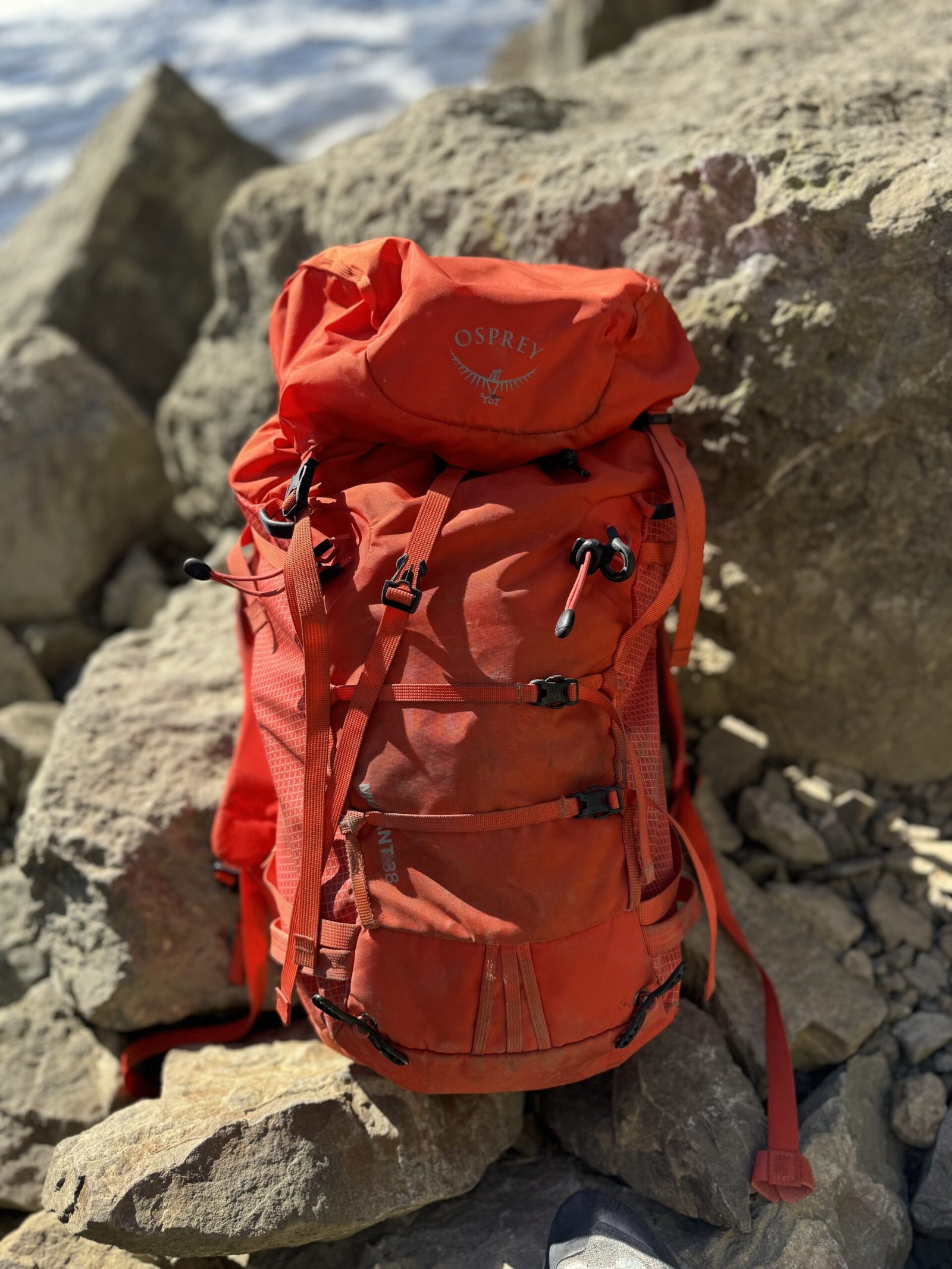
Quick Pros and Cons
- durability
- pack can be stripped down
- comparatively low price ($200) for value
- gear loops on hip belt
- comfortable climbing profile
- perhaps overkill in straps for 90% of use cases
- narrow fit is great for climbing but can make the bag carry in a top-heavy way when overstuffed
If you peruse any “top climbing backpacks” list or Reddit thread, you’re going to find people recommending the Osprey Mutant 38. This popular climbing bag is designed and marketed as a bag for “mountaineering in demanding alpine conditions or spending long days conquering multi-pitch ascents.” But I’ve found it to be an excellent piece of gear for multi-pitch climbs and basic crag days alike.
So is it worth the hype? In my experience over the last year, yes. The Osprey Mutant 38L an incredibly functional workhorse bag up to the task for any adventure. I’ll break down all the features of this bag, as well as who it may be good for and who it may not be suited for.
My Experience with the Mutant & Requirements for a Pack
The Osprey Mutant 38 has been my daily driver backpack for the last year. I have the updated 2024 version recycled NanoFly® and robic fabrics. It’s been my go-to ice climbing backpack, and I’ve used it as a carry-all for Yosemite and Tahoe climbing trips. I climbed Cathedral Peak in Tuolumne with this pack (did not take it off in the chimney), before I decided to switch to a smaller alpine backpack.
My original requirements were simple: a 35-50L bag with a comfortable hip belt, ice tool attachments, and a removable top flap/brain. I bought the pack with a 20% REI member coupon with the intention to use it when the ice season started but it ended up becoming my summer time crag, do-it-all bag too.
Features and Haul Capacity
This is a 38L bag, but I’ve found Osprey sizing to be generous and have been able to fit a ton into this pack.
On a typical cragging day, I’ve found the Osprey can fit a 70m rope inside a Metolius Ropemaster bag, a full set of 12 draws, harness, rap kit and GriGri, some cordelette, enough carabiners for a quad anchor + a few extras, 2 1L Hydroflasks, an extra layer, and of course smaller items like snacks, headlamp, knife, and med kit go in the removable lid. With this setup, my shoes and helmet get clipped to the outside of the bag. I’ve also managed to squeeze a .1-3 trad rack of Black Diamond cams on the top, though when that happens, I often end up carrying the rope outside the bag as it tends to max out the bag’s capacity.
The Mutant shines in its specialized features. Its A-frame ski carry, ice tool attachments, and reinforced front panel make it well-suited for winter and alpine conditions. For both ice and rock use, the removable helmet carry and rope carry system allows for customizable and efficient carrying. The removable lid is also a huge plus, so you can shrink the pack depending on your adventure’s demands and pack load.
Osprey packs also have a reputation for being big nests of gear straps, and the Mutant is no exception. There are more gear straps on this pack than you could ever possibly want. But the feature I find most valuable are the gear loops on the hip straps, which I often use to store loose gear and cams if I am too tired to sort them in the pack for a walk back to the car.
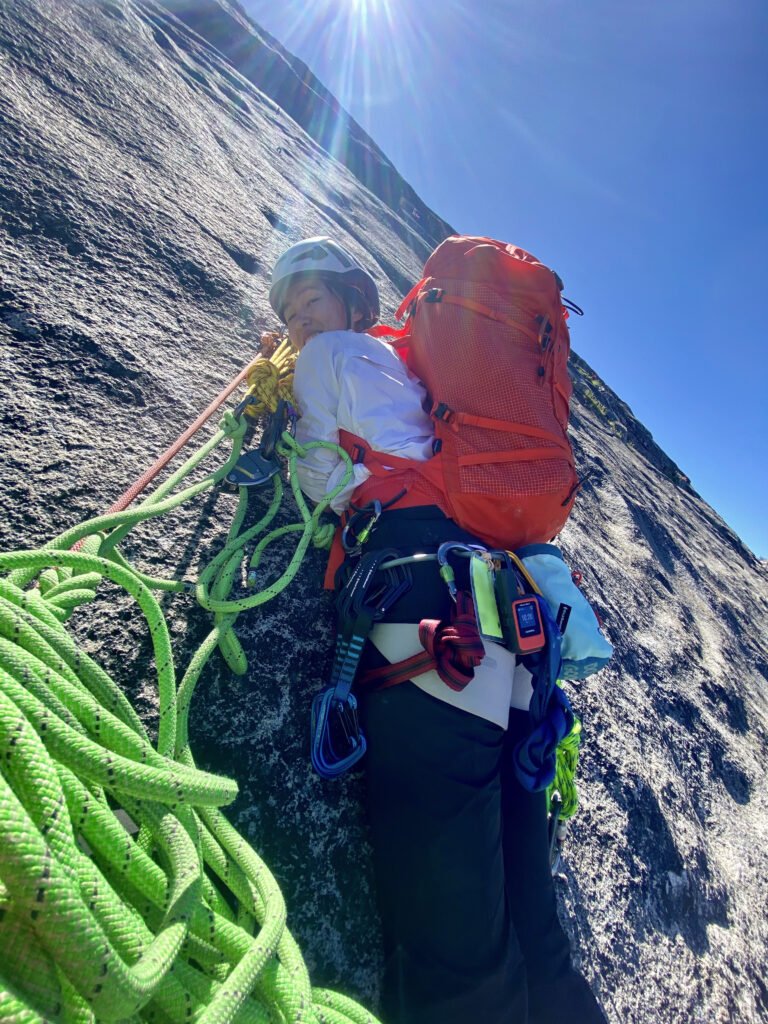
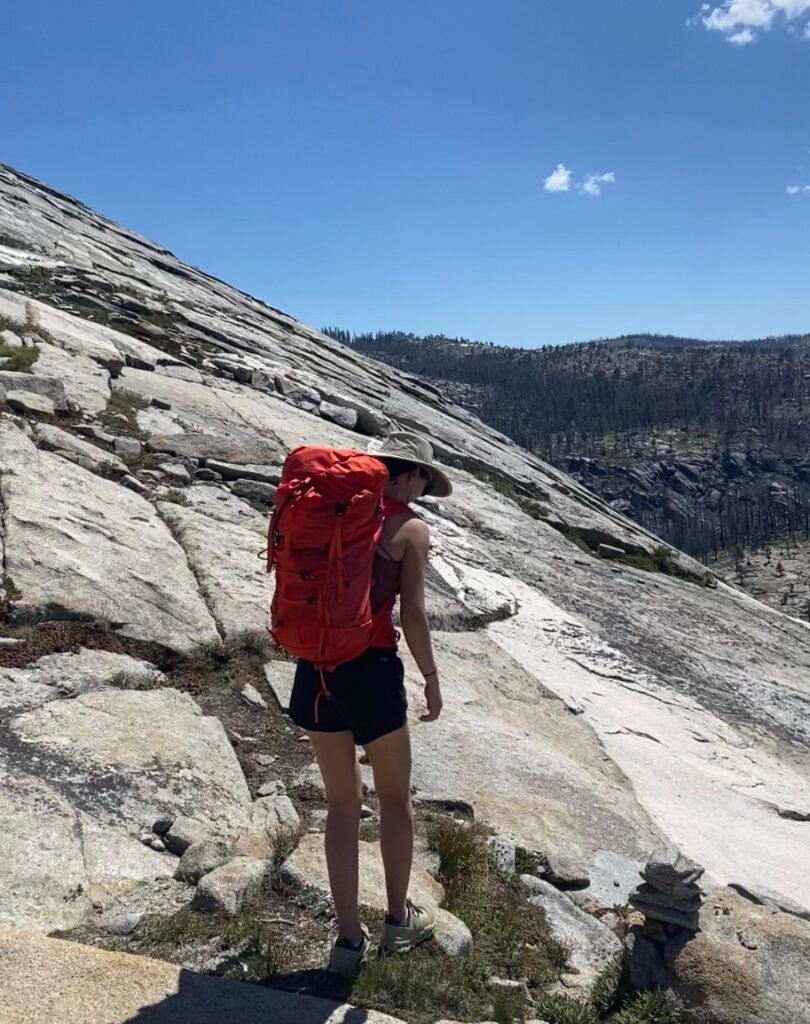
Carrying Comfort
Like a true alpine climbing pack, this bag is designed with a narrow profile around the hips so as not to impede movement. It also sits much higher on your hips than a traditional backpacking bag, so you can comfortably wear it with a harness.
On a typical day, my pack weighs anywhere from 27-35lbs, and the Osprey has felt great carrying that level of load, even on long approaches and over terrain that morphs into a scramble. For reference, Osprey lists the recommended carrying load capacity as 10-30lbs.
I have taken this pack into 5-class terrain too.
The Osprey felt surprisingly comfortable up 5.7-5.9 granite slab and on Cathedral Peak. Would I want to make climbing 5.9 with a fully loaded Mutant a regular practice? No thank you, I’ve switched to the slightly smaller Arctery’x Alpha FL 22 for that. But still, the pack carries quite well and only impedes my climbing a bit as the back of the brain sits pretty high and so your head sometimes hits it when you look up.
My only criticism comes from the way the pack must be loaded to maintain that narrow profile down at the hips. As you load the pack, the carrying capacity down low is narrower. This means that while ideally you load heavy stuff like hardware down low, you will inevitably have more loose items or items you want readily accessibly (water bottles, radios, harness, layers) up top. Depending on how well you pack the bag, this can mean a pretty top-heavy setup. Not a huge deal, and you get used to it (or learn to load it smarter). But the narrow constriction of the bag through the bottom 1/3-1/2 does mean this bag carries differently than a wider counterpart. Again, this pretty standard for an alpine climbing bag, and it’s what enables the ability to move easier in different terrain without the backpack getting in the way, so it’s tough to complain.
Plus, if you carry the rope on the outside, you’ll have a top heavy setup anyway.
Durability
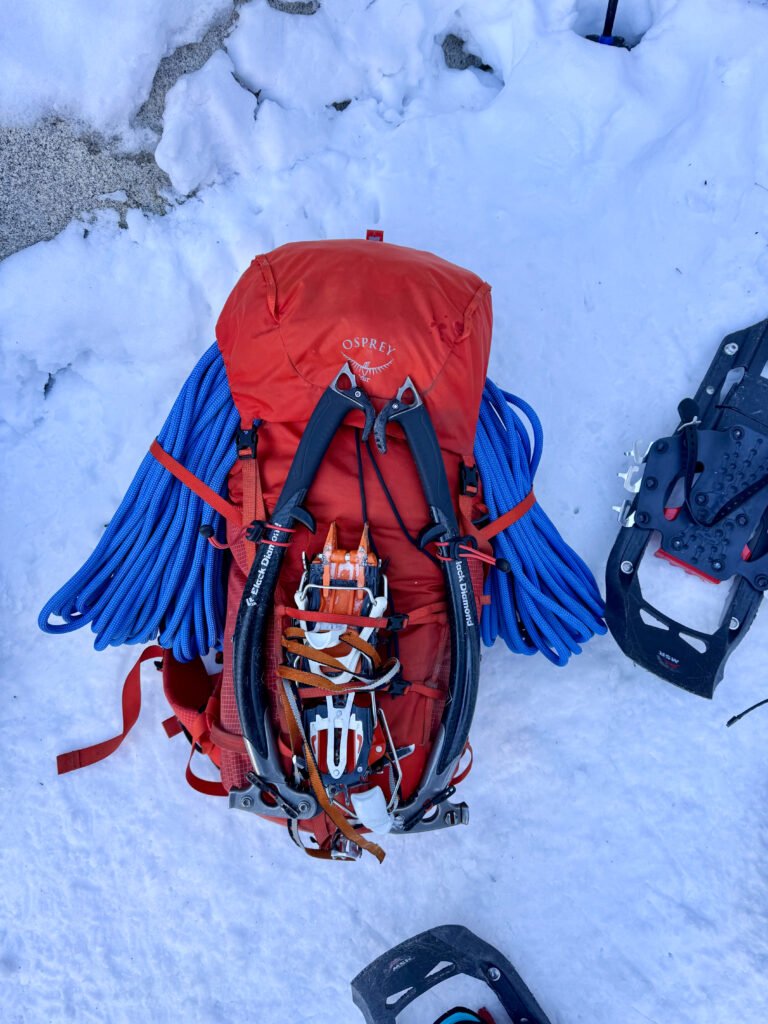
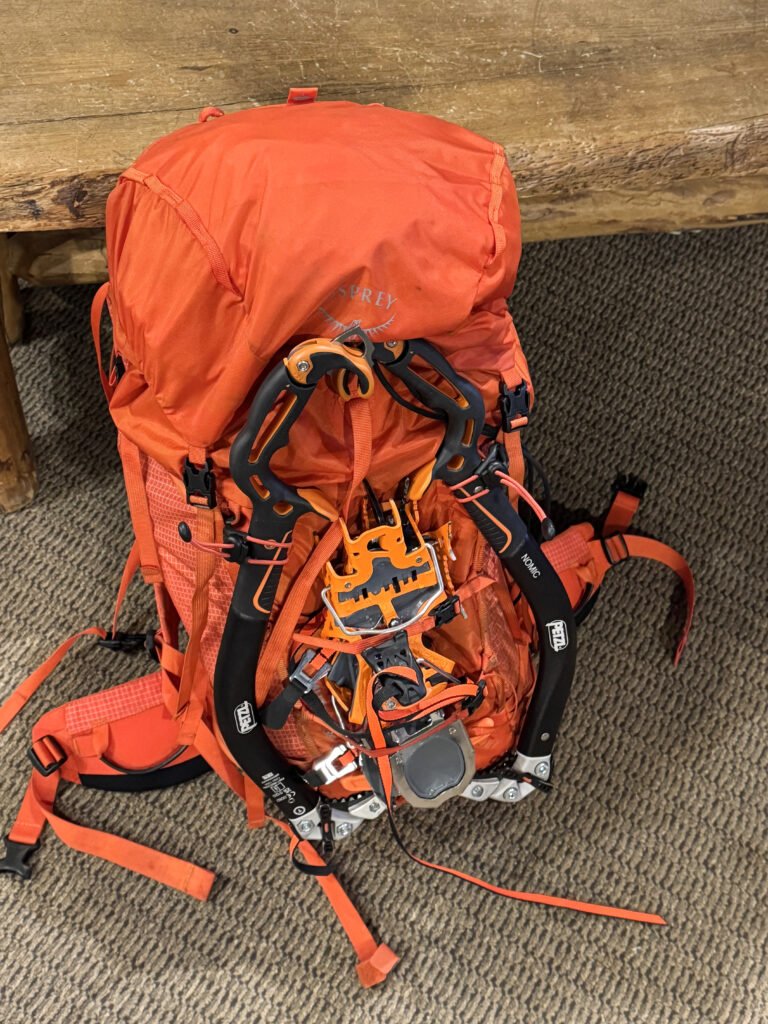
The Osprey Mutant 38 is designed with durability in mind, using high-denier fabrics to withstand the abrasive and demanding conditions. I have thrown this pack down on rocks at the base of a climb, lowered and hauled it using the haul loop, let it bake in the sun all day during summer months, and bushwacked, tearing through trees and brush with it. The pack has held up remarkably well, and though you can see signs of wear starting to develop on the bottom of the bag, I have no doubt it will last me several more seasons.
The pack features 210D nylon on the bottom. Now I’ve seen some info on the bottom being comprised of 420D nylon, which seems standard for providing abrasion resistance for rugged outdoor packs, but perhaps that was for a past version as Osprey’s website now lists 210D as the standard across all components of the pack. In any case, the robust construction contributes to the pack’s slightly higher weight (2.5lbs for the S/M size and 2.7lbs for M/L) , which some people gripe about, but I personally don’t mind a heavier pack in exchange for durability.
Minor Drawbacks
After a significant amount of use, I can only think of a few minor drawbacks to the Mutant, aside from the carrying caveat I described earlier.
The bulk of potential drawbacks surrounds the strappy design. A lot of the straps on this bag will be overkill for most climbers in most situations. That said, I do often use the straps for lashing gear that won’t fit in the pack, and I may find myself using them more in winter for crampons and ice tools.
The only minorly annoying thing about the straps is the rope carry strap, which tends to dangle down if not actively buckled or used. I tend not to buckle it because then it gets in the way of opening the pack. That said, this is such a minor issue for what is otherwise a perfect pack.
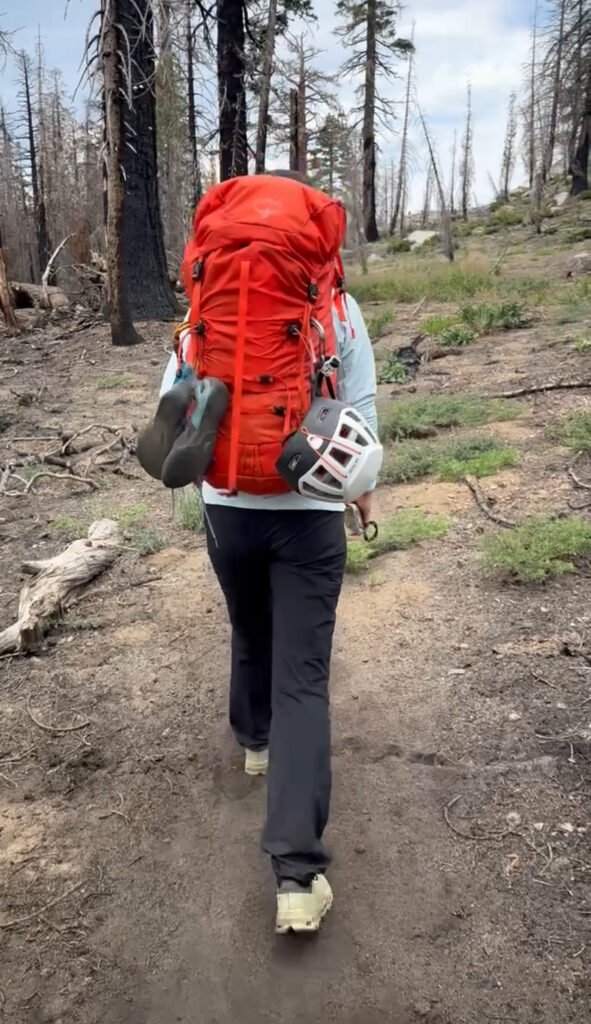
Value and Price
The Osprey Mutant offers great value for its price, especially considering its durable build and thoughtful features. It’s designed for rugged use, and the attention to detail shows in everything from the streamlined profile to the secure tool attachments.
Plus, since it’s sold through major outdoor retailers like REI and Backcountry, you can often grab it for 20% off during seasonal sales, making it an even better investment for climbers looking for a reliable and versatile pack.
Closing Thoughts
I’ve loved my Osprey Mutant and would highly recommend this pack for any adventure requiring a 35-45L hauling capacity. I’m personally exploring switching to the Black Diamond Mission 55 as I collect more trad gear and still want room to carry a full sandwich and cornucopia of snacks in my climbing bag.
Yes, I could retain my 38L and move to carrying my rope on the outside of the pack (but I climb in a lot of dusty places and find a rope bag is invaluable). Yes, I could simply take the time to organize my gear better or coordinate with partners so I’m not carrying so much. But I’d rather just get a bigger bag and not have to fuss with either of those options.
As I went to upgrade capacity, I did not opt for the big brother Osprey 52 for perhaps a silly reason—I like my outdoor gear to be bright and visible in the event I ever need rescue, and right now the Osprey 52 only comes in a drab grey. If it came in the same Mars/Orange colorway, I would snap the 52L version up (update: as of 2025, the Mutant 52 now comes in bright “Blue Flame.”)
That said, the Osprey Mutant 38 is a pack I don’t hesitate to recommend. It has proven itself and has a permanent place in my gear arsenal and will always be a go to pack for me on days when I’m just headed to the local sport crag or a lighter alpine adventure.
